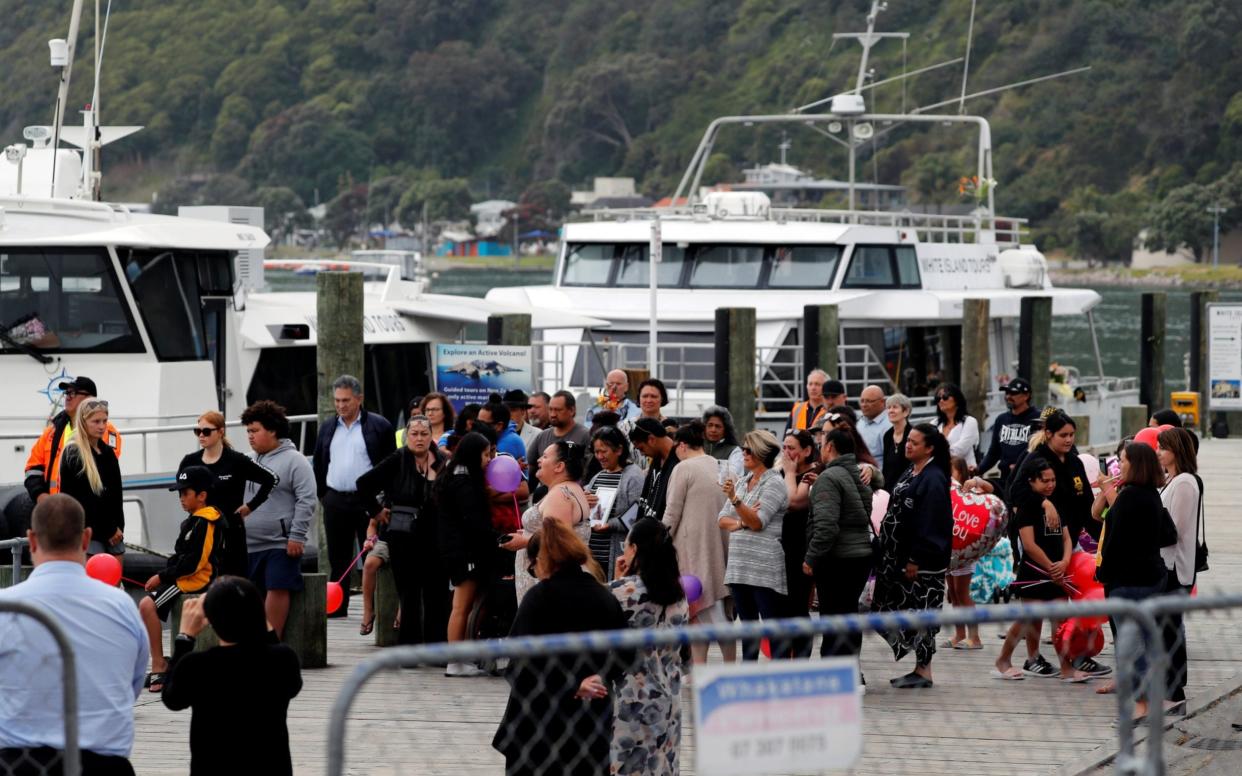New Zealand volcano eruption: recovery team lands on White Island

A dangerous mission to recover the bodies from New Zealand’s White Island has begun, with an elite team landing on the island amid warnings that the chances of a new eruption remain perilously high.
New Zealand Police confirmed the risky operation had started shortly before 7.30am on Friday NZT (6.30pm UK time), following a blessing at sea with family and friends of the deceased.
The recovery mission comes four days after Monday’s eruption killed eight and left another 31 hospitalised, while eight more remain missing, presumed dead.
Family and friends of the deceased gathered on the foreshore of Whakatane before daybreak, sharing karakia (prayer) and hoping that today would finally be the day they would get their loved ones’ bodies back.
More people have gathered along the coastline to observe the proceedings, looking out to the island, also known as Whakaari, just 50km away.
Only six of the eight bodies thought to be on the island had been spotted through drone footage and other surveillance, Deputy Police Commissioner Mike Clement told a press conference on Thursday night.
"Our first priority will be to get those six people off, and we will have very limited opportunity to look for the two others that we suspect are out there somewhere,” he said.
Despite plans to get the bodies off the island as quickly as possible, the task is still expected to take several hours, the “balance of the morning”, Commissioner Clement said.
A team of eight New Zealand Defence Force members involved with the mission have prepared for the worst: toxic gases from the volcano, landslides, rockfalls and, worst case scenario - the potential for another eruption, Commissioner Clement said.
“We have a plan, the resources and the capability to recover the bodies.”
The risk of another eruption has only increased as the days have gone by. Earlier in the week, the risk of an imminent second eruption had sat between 40-60 per cent, but this had increased to 50-60 per cent by Thursday.
Despite the risk, police have committed to the recovery, with plans to get off the island as quickly as possible in place should the situation change, Commissioner Clement said.
“We don’t expect the risk to change tonight or tomorrow but we have planned for it,” he said.
A team from GNS Science are monitoring the situation, providing up-to-date information from the HMNZS Wellington ship nearby.
Graham Leonard, a volcanic geologist with GNS Science, described the island as “highly volatile”, showing maps indicating the different zones of risk his team had put together.
The red “no-go” zone covers the inner of the island, and the yellow section, encompassing the remainder of the island, would require special clearance for scientists to be allowed access. Rescuers are expected to enter both zones, as they have taken their own positions on risk after taking on GNS and Civil Defence advice.
A rāhui, or sacred restriction, has been put in place by Maori tribe Ngāti Awa along the Bay of Plenty coastline, in respect for the deceased and the volatile nature of the island. This prohibits all maritime activity along the coastline at the waters for several days, but has been briefly lifted for the recovery mission.
Fifteen survivors remain in burns units of hospitals across New Zealand, two of them British women.
Seven Australians have been repatriated back to hospitals in Australia, while another six are set to be moved by the end of Friday.
Three people caught up in Monday’s eruption were released from hospital later that day, but those who remain hospitalised are in critical condition, medical specialists say.

